
Chernobyl as a medium of global art
The Chernobyl nuclear disaster happened during the Soviet period in Ukraine, in 1986. The tragedy changed the history of Europe and impacted the lives of thousands, leading to numerous deaths, dangerous diseases, and various health-related issues. People from the area near the exploded nuclear reactor had to leave their houses and their past lives behind. Nowadays, Chernobyl is a hyped topic in global mass culture. This article takes a look at how Chernobyl regained global attention through art and how this helps raise the world’s awareness of the dangers of nuclear energy.
Movies, TV series, music, video games, and books are created every year drawing attention to the disastrous tragedy. This popularity has an impact on the region. When one arrives in Kyiv, Ukraine, ads on social media suggest visiting the dangerous zone for around 45 euro for a one-day excursion. YouTube is full of vlogs from the no-go area made by people who were inspired by the famous Chernobyl HBO series, or others who played Call of Duty or S.T.A.L.K.E.R. and want to get a first-hand experience of the setting. Except for the art-related discussion, the article will also elaborate on how the tragedy and the artists' attention to it, changed the region and the perception of Chernobyl and Ukraine in general. For the discussion, literature and additional materials will be used, as well at theory on globalization and art.
Chernobyl in times of intense globalization
Globalization has a broad influence on every aspect of our lives. It is one of the most controversial and hotly debated phenomena currently, especially with regard to art (Hoondert, 2019). Despite ongoing discussions in the humanities, globalization and art are deeply interconnected. Throughout the years, one has been shown to influence and promote the other.
Globalization, as a part of world history, is one outstanding phenomenon in that it is “dubious because it is incomplete – regions of the world lie outside the global village – and, in any event, the process has been ongoing for centuries” (Carrol, 2012). Chernobyl, as a place that has been abandoned for years, should have been out of the global cultural network society. However, the opposite has occurred.
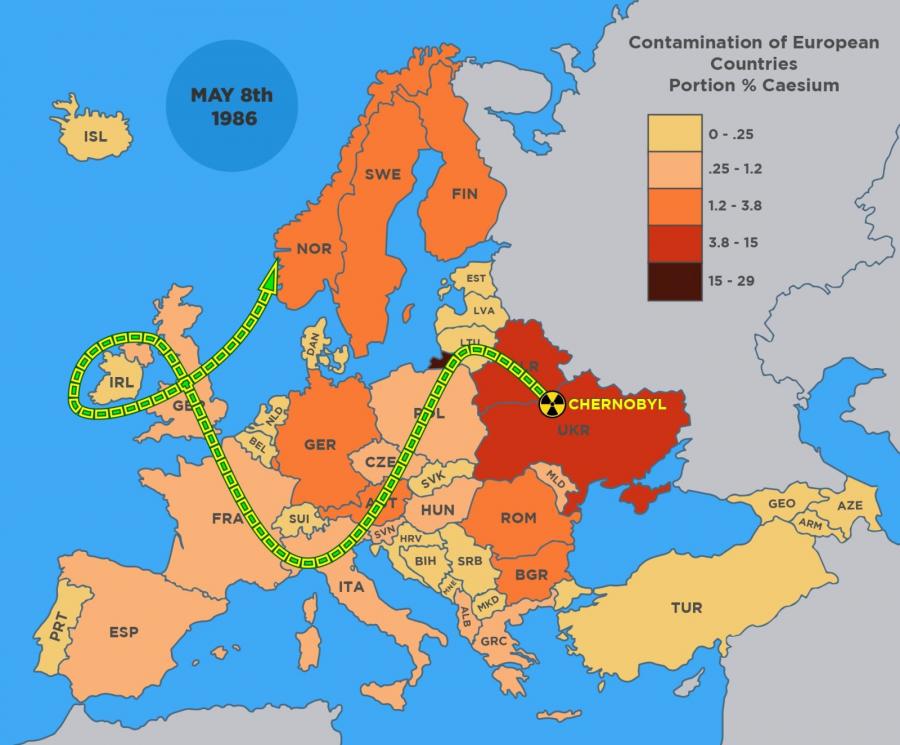
Chernobyl on the map
In the case of Chernobyl, the tragedy is given a global reach as it gets rediscovered through art. Some of the ways in which the nuclear tragedy got popularized as a part of the global culture field are literature, documentaries and feature films, music compositions and clips, TV series, art installations, murals, and video games. Only part of all these creations was made by local artists. Many of the art pieces were produced by people born and raised far from the nuclear disaster.
In times of intensification of globalization, the world seems to become "smaller" with the high mobility of information, goods, news, and people (Carrol, 2012). This feature of globalization allows many people from all around the world to feel closer to the events of Chernobyl. Many artists from all around the world have found their inspiration in the world’s worst nuclear tragedy.
It is often assumed that globalization destroys cultural identities (Tomilson, 2003). However, the cultural identity of Chernobyl has been rediscovered as a product of globalization (Tomilson, 2003) due to the wide reach the topic has in the world. In many cases, global art has rendered the "upsurging identity of local culture" (Tomilsom, 2003) of the nuclear disaster more romanticized, adventurous, and modern, yet still preserving the tragic message of the explosion and the lives it has left behind.
Chernobyl as a museum
Nowadays, Chernobyl has a few primary functions. The power plant could be compared to a museum of nuclear science. Museums have a few functions themselves. Among them are power display, their educational function, and acting as heritage, constructing a national and cultural identity (Hoondert, 2019).
Back in the time of its creation, the Chernobyl Nuclear Power Plant was named after Vladimir Lenin and was one of the biggest in the Soviet Union. Different sources say that the final project of the power plant was to consist of six to twelve reactors. The station also had a whole "nuclear employee" city, Prypiat, covering its technological needs. Such a scale of planning and organization demonstrates the power display that the place fulfilled. Although not used today, the Power Plant and the ghost city still maintain their power demonstration function of the past.
Chernobyl could also be regarded as a museum given that it provides an illustration of humanity's progress in the development of energy. The place offers many certified tours (Figure 2) to the territory near the reactor, as well as the abandoned city of Prypiat. Chernobyl, thus, displays an educational function. The former nuclear plant, as well as a the ghost city, can teach visitors about the dangers and consequences of nuclear energy.
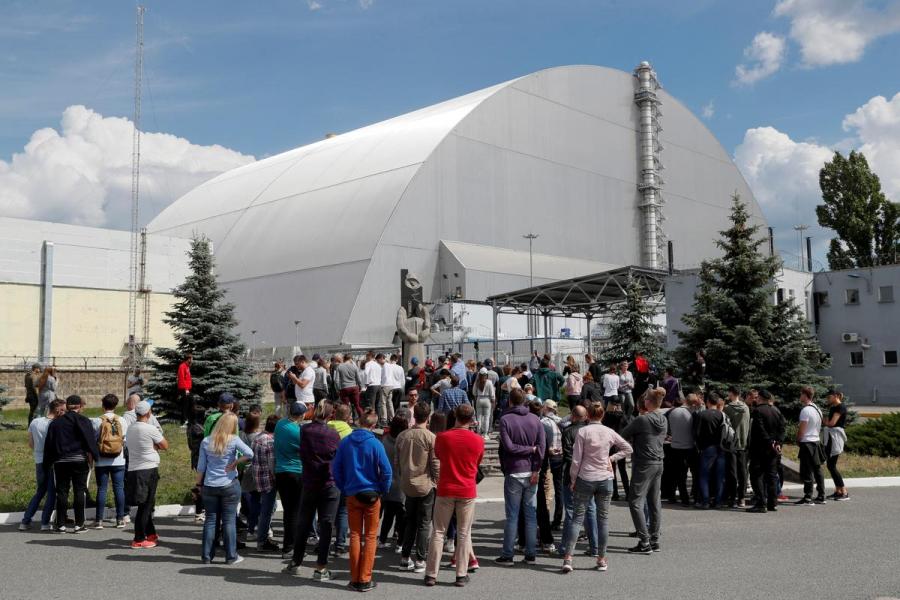
"HBO show success drives Chernobyl tourism boom" (Reuters, 2019)
Chernobyl also has a nation-building function. It is a part of historical heritage, with "heritage" referring to "the whole complex of organisations, institutions and practices devoted to the preservation and presentation of culture and the arts" (Hall, 1999). Chernobyl is frequently mentioned in the Ukrainian schooling system. Every year, on the day of the disaster, students all around the country discuss the event and how similar tragedies can be prevented in the future.
Besides being a power-, education-, and nation-building medium, Chernobyl has become a center of cultural flow for art producers around the world too. Its reach is connected to the devastating consequences of the tragedy. The whole European continent was affected by the nuclear explosion with the radiation spreading as far as to Norway and Portugal.
The realization that such events affect everyone on Earth led to numerous statements by international and local artists while the place still generates much discussion. Consequentially, art contributes to the awareness of the tragedy and starts global debates on nuclear energy.
Chernobyl in global art
The Chernobyl Power Plant was built in the Soviet Union, a country that was promoting its nuclear power successes. Many artists all over the fifteen republics contributed to murals, literature, and paintings dedicated to the "peaceful atom".
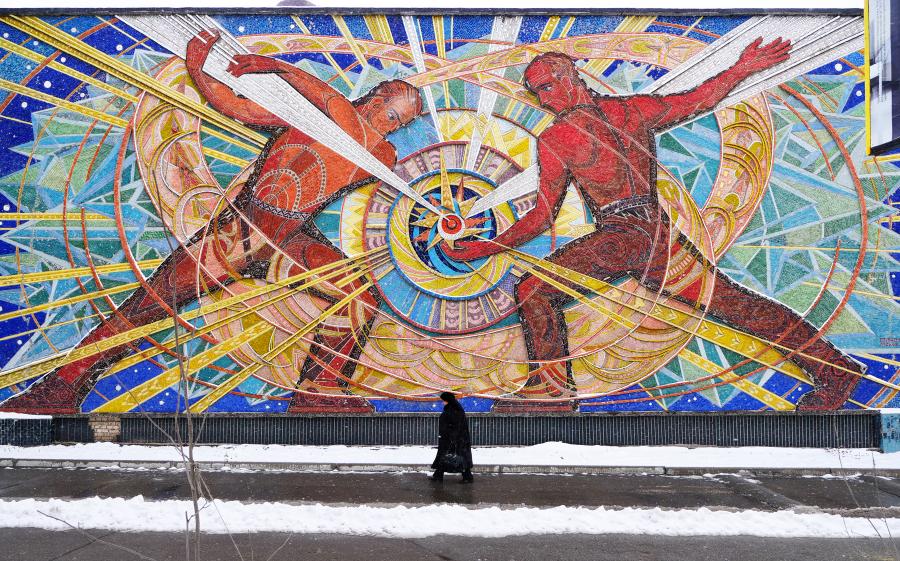
Soviet art dedicated to nuclear energy
Chernobyl got most of its attention after the accident. The artworks dedicated to the disaster started appearing in 1986, right after the explosion. One of them was the film The bell of Chernobyl (1987), which was awarded the Guinness world record for being shown in every that had television.
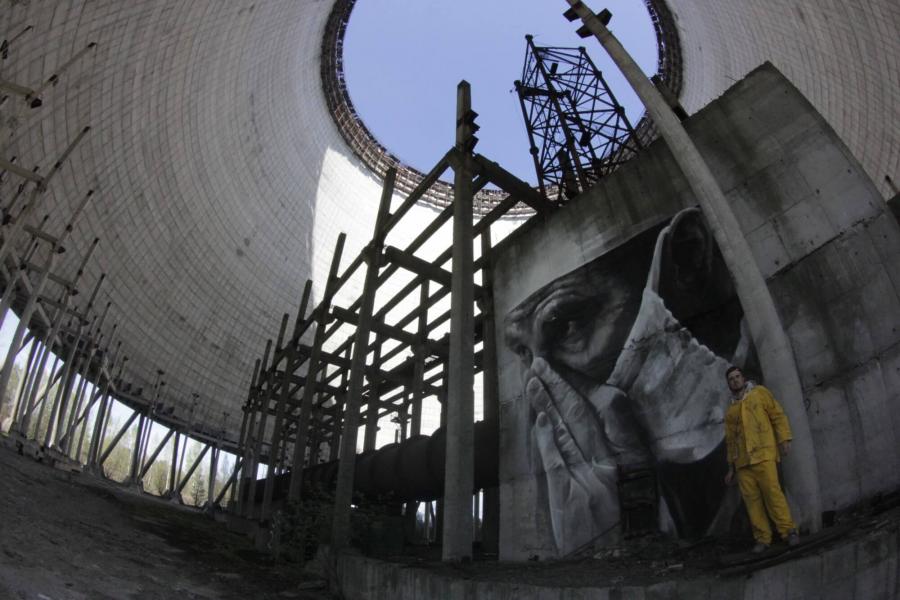
Mural by Guildo Van Helton near the Chernobyl Reactor.
All in all, the global artistic footprint left by Chernobyl contains thirteen fiction movies, nine documentaries, thirteen TV shows, twenty-two features in music compositions, a series of thirty paintings (Gumanyuk, 2012), ten features on television projects, ten video games, a few art projects within the territories of Chernobyl and Prypiat, murals (Figures 3,4), and countless pictures taken by photographers who visited the area. Some examples of such works will be analyzed below.
Voices from Chernobyl: The Oral History of a Nuclear Disaster
Voices from Chernobyl, a book by the Nobel Laureate in Literature Svetlana Alexievich, deals with the life stories of different people affected by the nuclear tragedy. The identities of individuals from different countries, social positions, and backgrounds are united under the disastrous consequences of the Chernobyl disaster.
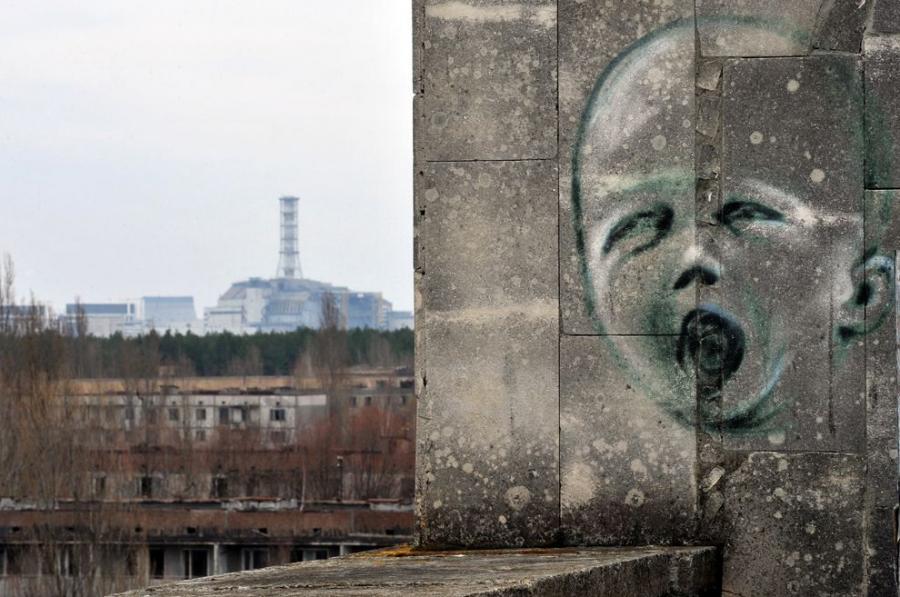
Mural in Prypiat by Polish artists
The book is a collection of interviews with people who experienced the nuclear disaster as a part of living in Pripyat or being sent there to help with the liquidation from different republics of the Soviet Union. Some focus on the day of the explosion, others share how Chernobyl affected their lives later.
The bitter tragedy presented in the book is based on the real lives of the sufferers of the events of 1986. Distinct individuals with different backgrounds come back to one common point of reference: to them being near the reactor at the same time.
The cultural narrative of Chernobyl was spread globally due to the significant popularity of the book in post-Soviet states and abroad. Alexievich became a truly global literary author. In eight countries, from Germany to the UK, the book became an inspiration for theater plays. Voices of Chernobyl has also provided the background for three different movies and TV series, including Chernobyl (2019) on HBO.
Chernobyl by HBO
Most of the attention drawn to the nuclear tragedy in recent years was probably due to the TV series about Chernobyl that aired on HBO in 2019. The show was produced jointly by the US and the UK and has become a worldwide sensation. It is now highest-rated TV series of all time on IMDb, as decided by over 140,000 users (Spangler, 2019). The miniseries has won, among others, ten Emmy Awards and two Golden Globe Awards.
The miniseries, "based on the untold true story" (HBO, 2019), very accurately demonstrated the explosion of the reactor and the heroism of people who helped liquidate the outcomes of the tragedy, as well as the cruelty of the former political system. The TV show was discussed all over the world, drawing massive attention to Chernobyl.
Such a broad discussion lead to the increase of tourism in the exclusion zone in Ukraine and drew interest for the outcomes of the nuclear disaster. Following the series, the topic was trending on all the leading social media and gave rise to memes, stalker pictures, and stories about the place, leading to the global spread of the Chernobyl narrative.
Music performances
The Chernobyl nuclear disaster inspired multiple music performances. Among them is the video of Pink Floyd song "Marooned". The clip shows footage from the ghost city of Prypiat. The video has over 28 million views on Pink Floyd's official YouTube channel.
The group’s designer Aubrey Powell said: “We shot that film [in Prypiat], and it had fantastic reception because it was drawing people's attention to the death of that city through nuclear power and the dangers of nuclear power.” (Pannier,2014) Powell seems to understand that the video raised people's awareness regarding nuclear power.
Still, more musicians worldwide dedicated their works to the Chernobyl tragedy, from Ukraine to Japan, the US, Brazil, and Canada. Among the most popular names are David Bowie, Adriano Celentano, Example, Outcast, and others. By dealing with the topic of the nuclear accident, the artists globally drew the attention of their fans to Chernobyl.
Chernobyl in S.T.A.L.K.E.R. and Call of Duty
Among the most popular video games that feature Prypiat and the Chernobyl power plant are S.T.A.L.K.E.R. and Call of Duty. The graphic designers who developed the games made sure to capture the details of how the area looks like these days. The thrilling plot has led thousands of fans all around the world to Ukraine to explore the area first hand.
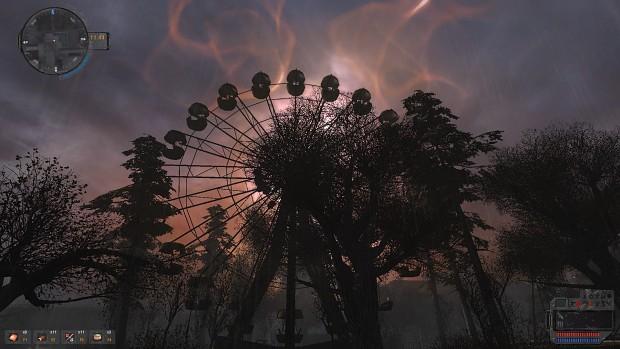
Still of Prypiat's ferris wheel from the game S.T.A.L.K.E.R.
Local projects
While many artists engage with the Chernobyl disaster on the global stage, some also organize local art projects that refer to global issues in the city of Prypiat. Among the recent projects is an art installation titled "Artefact", which took place in 2018. The exhibition consisted of light installations in the middle of a rave party. Many visitors and journalists from around the world came to Ukraine to join the event.
Artefact was dedicated not just to the consequences of nuclear disaster, but to the misinformation which spread after the explosion. There is a chance that if the radiation had not reached beyond the territory of the Soviet Union and caused a mass panic around the world, the Soviet people would never know about the event. The citizens of Prypiat were evacuated only after 36 hours had elapsed from the explosion (Spangler, 2018). Artefact connects the misinformation surrounding the Chernobyl disaster and the "fake news" which influence the war with Russia in Eastern Ukraine these days, dealing with the ability of such false information to cause political and ideological conflicts in the world.
Art that carries a message
Global art is by definition contemporary, not just chronologically, but also "in a symbolic or even ideological sense" (Belting, 2009). Global art dedicated to Chernobyl is connected by the common reference point of the worst nuclear disaster in the history of humanity.
The artworks carry messages of ecological activism, political protest, nuclear energy awareness, and sustainability of information. Such expressions contribute to "our existence today [which] is marked by a tenebrous sense of survival, [and] living on the borderlines of 'present'" (Bhabha, 1994). These artworks are important because they contribute to the continued attention the world pays to Chernobyl. With the help of international artists, the topic of Chernobyl stays relevant and discussed globally.
The way Chernobyl changed Ukraine today
This broad attention to Chernobyl brought on by art influenced the "culturally-led urban renewal" (Miles, 2013) of the region. Such a new flow opened up "competitive edge in global competition for new investment [...] and cultural tourism" (Miles, 2013). The rise of tourism in the country has led to the creation of infrastructure around the city of Prypiat and the Chernobyl Nuclear Power Plant. The shuttles, certified guides, hotels, and even helicopter excursions draw a parallel between the area's redesign and the Bilbao project (Hoondert, 2019).
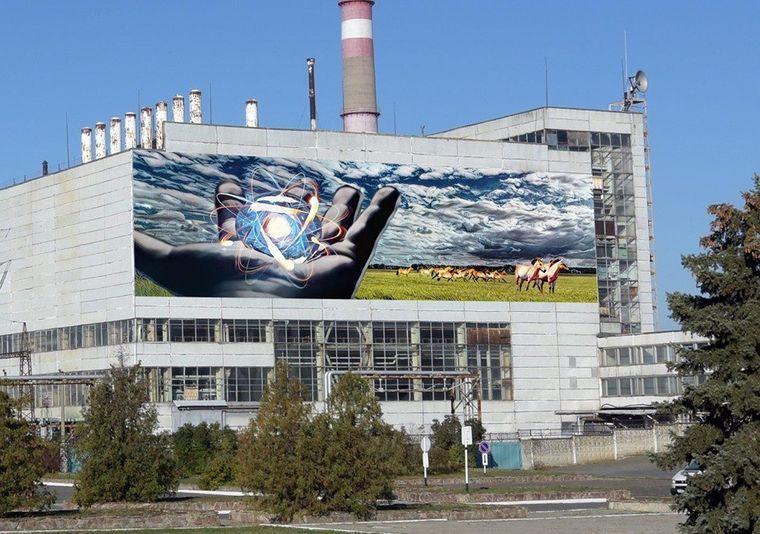
Mural on the Power Plant
After the crisis of 2008, many countries started actively developing tourism (Miles, 2013). In Ukraine, the exclusion zone was opened for tourists in 2011 and the number of people visiting kept growing year by year. "The Ukrainian government said it would make Chernobyl an official tourist site, with plans to improve infrastructure, checkpoints, routes, waterways and radiation monitoring." (Lin, 2019) The number of tourists in 2019, after the miniseries Chernobyl aired by HBO, rose to over 100,000 people compared to 72,000 in 2018 (Mitra, 2019).
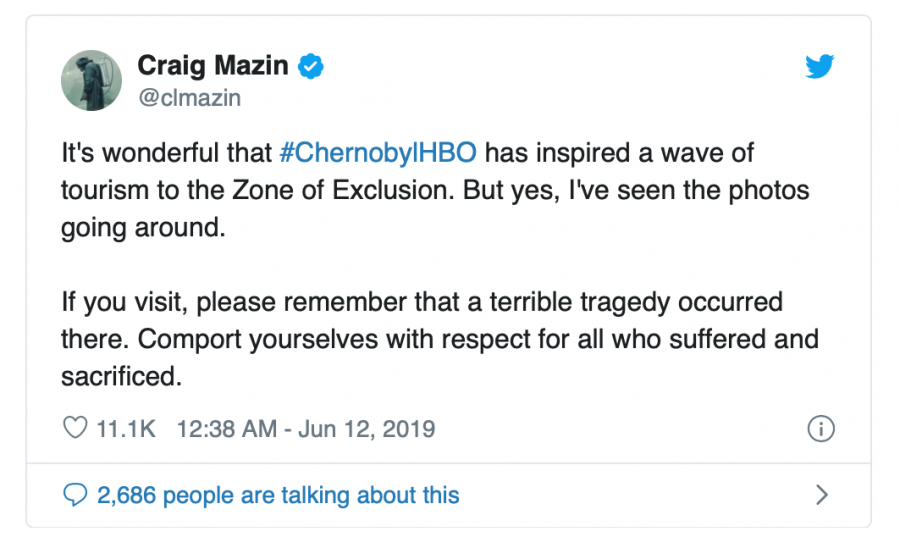
The writer and producer of HBO's Chernobyl tweets on the increase of tourism to the Power Plant.
Conclusions
The Chernobyl nuclear disaster has caused art flows around the world that popularized the topic of nuclear safety. The small city of Prypiat, which otherwise would have remained rather unknown, has become a powerful center of culture in the "network society" (Castells, 2000), and a world sensation with thousands of people visiting it every year. Artists who work in various genres have been inspired by Chernobyl and contributed to the global flow of attention to the site. These pieces carry important messages and draw attention to current world issues.
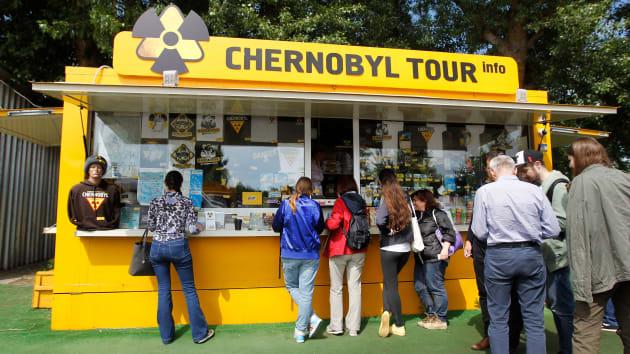
Tourists at the souvenir shop at one of the Chernobyl checkpoints
Chernobyl thus functions as a museum that draws thousands of people to explore it. This movement has transformed the infrastructure of the region as well as its representation in the world.
The cultural narrative of Chernobyl has influenced the global art movement. People all around the world can discover the Chernobyl disaster and rethink the tragedy of 1986 through the ways artists expresse their messages concerning nuclear energy, information, and politics. This has caused increased tourist influx to Ukraine and has changed the way the region is known worldwide as well as the local infrastructure.
References
Belting, H. (2009). Contemporary art as Global art. A critical estimate. Originally published in: Hans Belting and Andrea Buddensieg (eds.), The Global Art World. Ostfildern.
Bhabha, H. K. (1994). The Location of Culture. Introduction: Locations of Culture. Routledge.
Castells, M. (2000). Materials for an exploratory theory of the network society. London School of Economics.
Carrol, N. (2012). Art and Globalization: Then and Now. Blackwell Publishing on behalf of The American Society for Aesthetics.
Hall, S. (1999): Un-settling ‘the heritage’, re-imagining the post-nation. Whose heritage?, Third Text, 13:49, 3-13.
HBO. (2019). Chernobyl.
Hoondert, M. (2019). Art and Globalization. Tilburg University. [Lectures].
Lin, X. (2019). More visitors heading to Chernobyl, despite the risks. China Daily.
Miles, M. (2013). Re-Imagining the City: Art, Globalization and Urban Spaces. Chapter 2: Art and Culture: The global turn. The University of Plymouth.
Mitra, M. (2019). Pop culture is changing the tourism industry – the proof is in Chernobyl.
Pannier, B. (2014). Pink Floyd And The Aral Sea. Radio Free Europe Radio Liberty.
Reuters. (2019). HBO show success drives Chernobyl tourism boom.
Seymour, T. (2018). The Nuclear Option | We Went to a Rave in the Ruins of Chernobyl. Vice.
Spangler, T. (2019). HBO’s ‘Chernobyl’ Is Now the Top-Rated TV Show on IMDb.
Tomlinson, J. (2003). Globalization and cultural identity, in D. Held & A. McGrew (eds.), The global transformations reader. Polity 2003, 269-277.